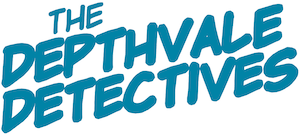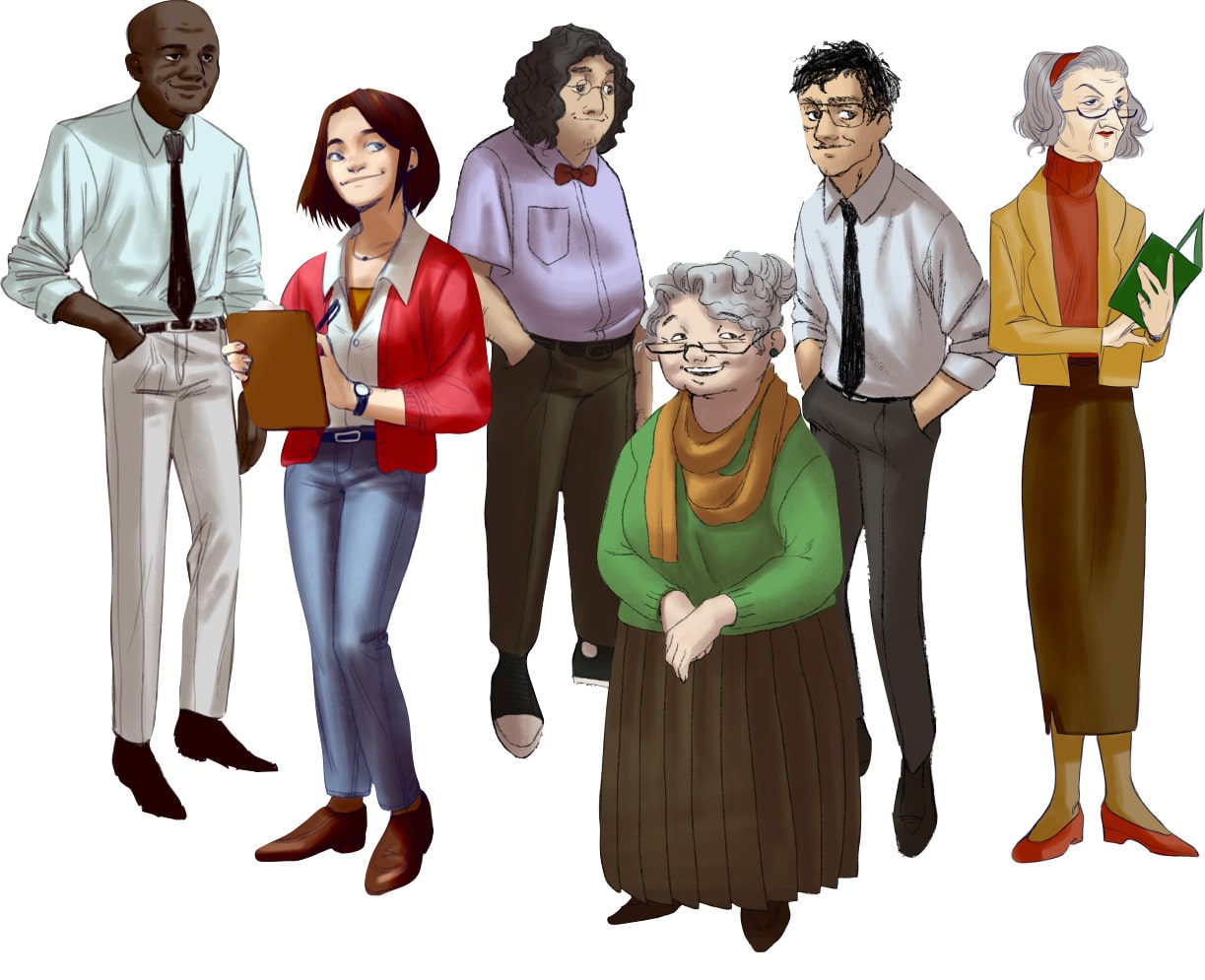What Is a Change Team?
Change Teams bring teachers, school leaders, and other school staff together to work toward contributive learning. They come up with ways to put well-being first, and to help students learn how to add to the world. Alongside your school Change Team, your class might be a Change Team, you might have a school-wide student Change Team, and your teams might include parents and other members of the community, too. No matter your team or its members, everyone can benefit from the first five phases of the Change Team Experience.
Phase 1: Start with Yourselves
Reflect on and discuss who you are as an individual, who you are as a school, and who you are as a community.
Phase 2: Pinpoint Your Purpose
Reflect on and discuss your purpose as a teacher, principal, student, parent, etc., your purpose as a school, and your purpose as a Change Team.
Phase 3: Dive into Outcomes
Use the Learning Progressions to dive into the contributive learning outcomes—self-understanding, knowledge, competency, and connection.
Phase 4: Plot Your Position
Use the Cultural Well-Being Rubric to measure your school’s or class’s cultural commitment to contributive learning.
Phase 5: Commit to Contribution
Are you ready to make the commitment together?
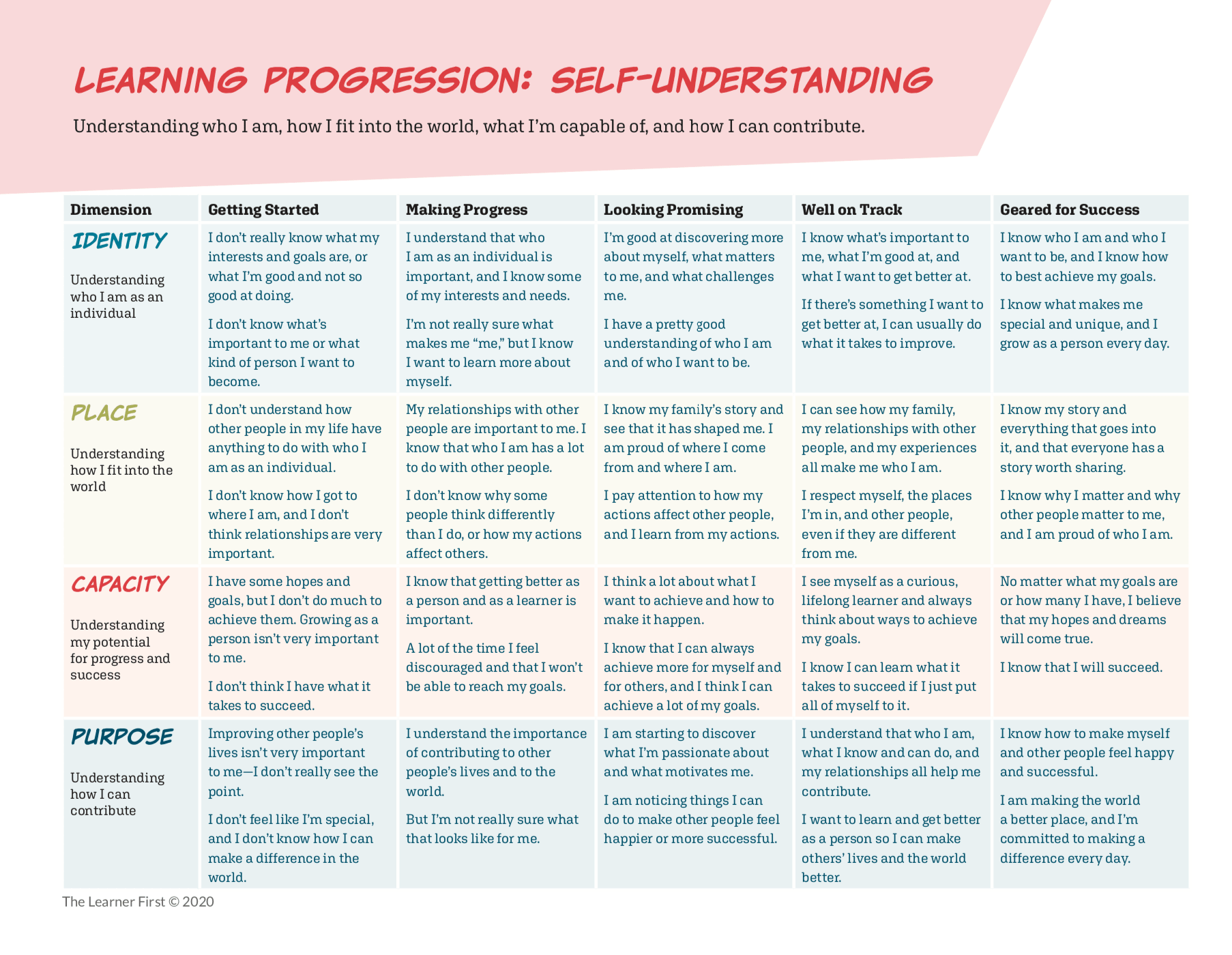
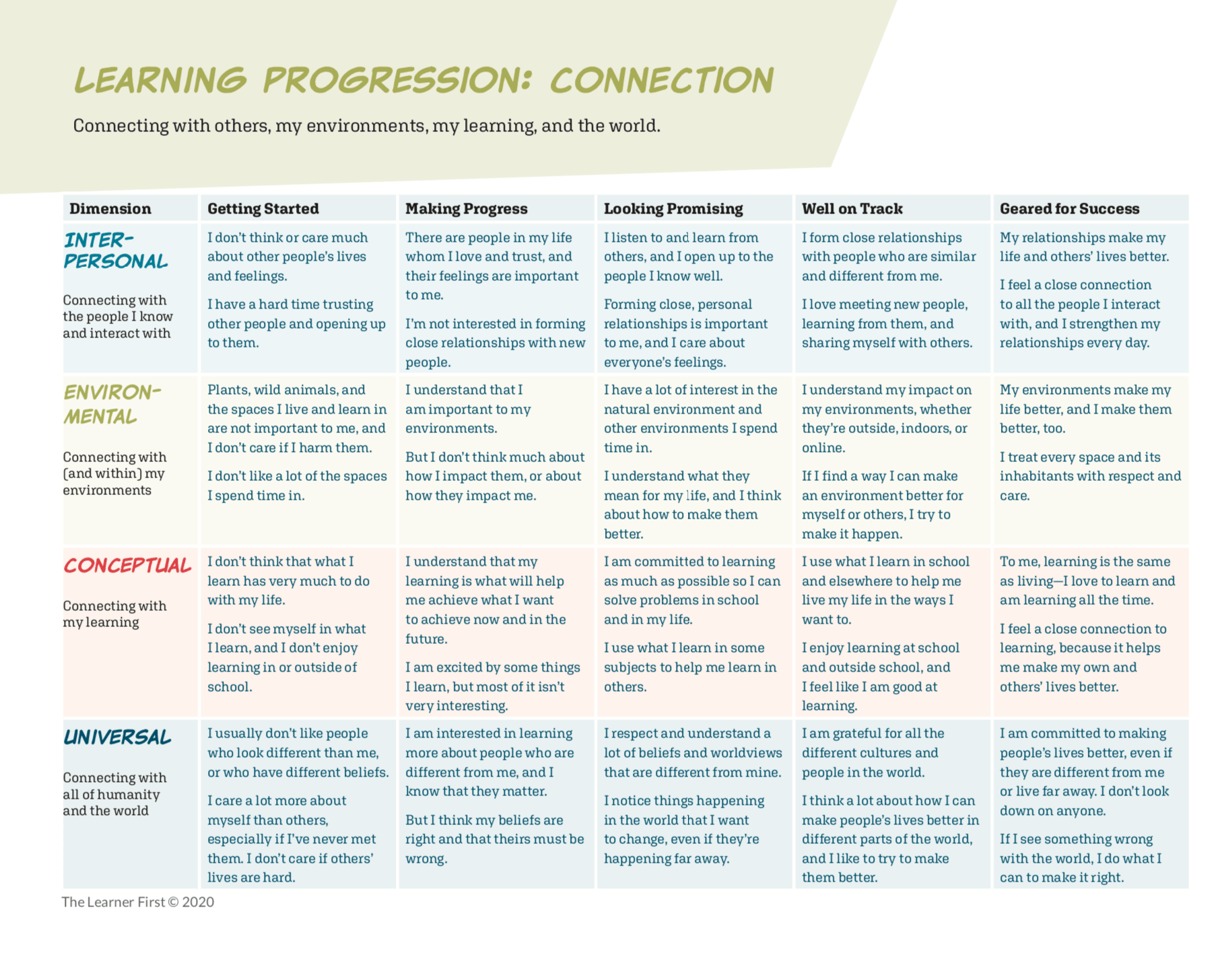
Learning Progressions
The Learning Progressions are measures of learning. You can use them to measure your students’ or your own self-understanding, connection, and competency. There are two versions of each Learning Progression:
- Regular. For use by students, teachers, parents—everyone!
- Extended. For those looking for a little extra language to frame teaching and learning.
Please get in touch if you’re interested in accessing the Learning Progressions and other tools. Get in Touch!
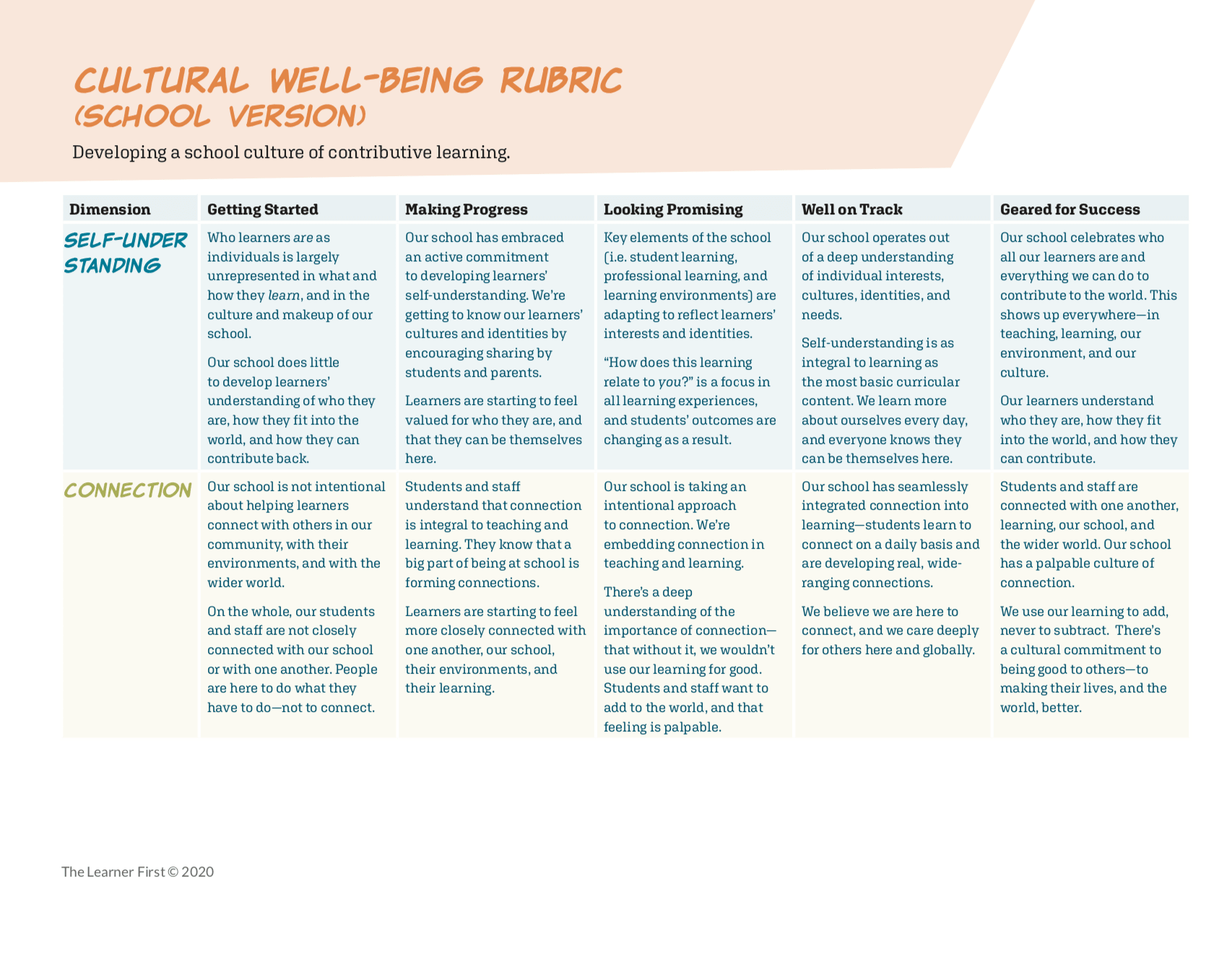
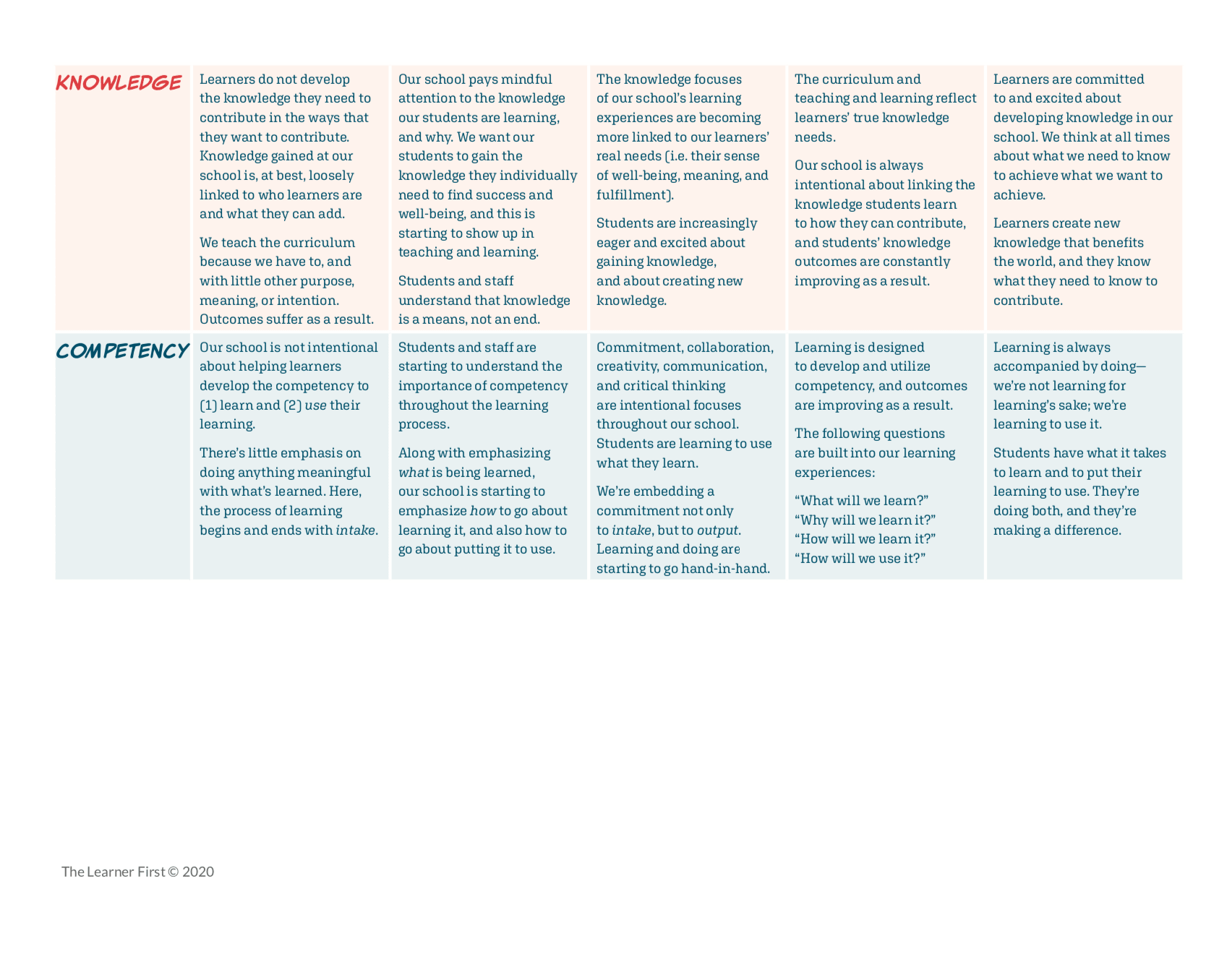
Cultural Well-Being Rubric
The classes and schools with the healthiest cultures focus equally on:
- developing self-understanding,
- making connections,
- cultivating knowledge, and
- fostering competency.
The Cultural Well-Being Rubric can help (1) teachers and their classes or (2) whole school communities to make a cultural commitment to contributive learning. Please get in touch if you’re interested in accessing the Cultural Well-Being Rubric and other tools. Get in Touch!
